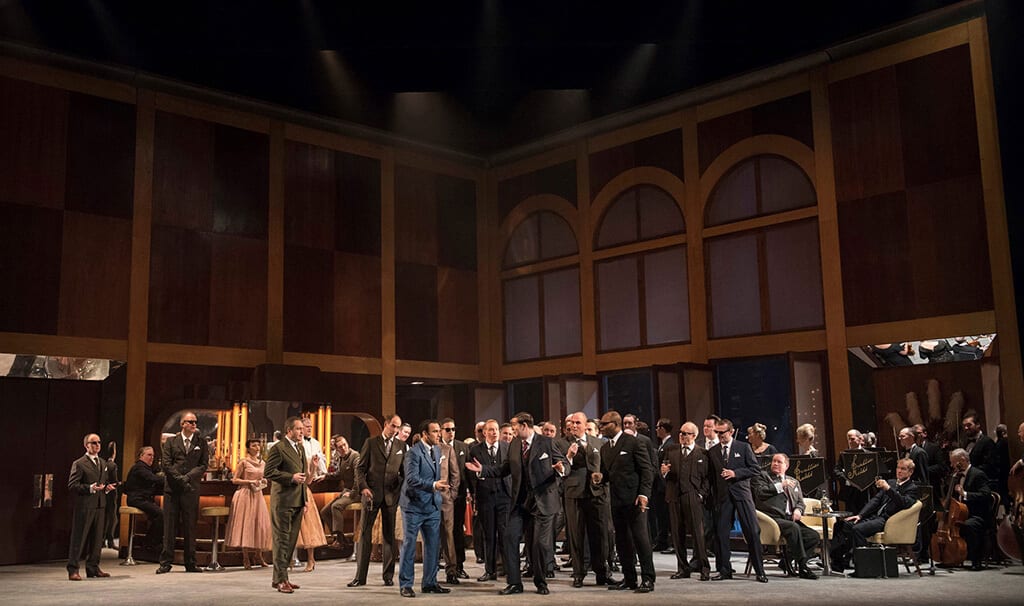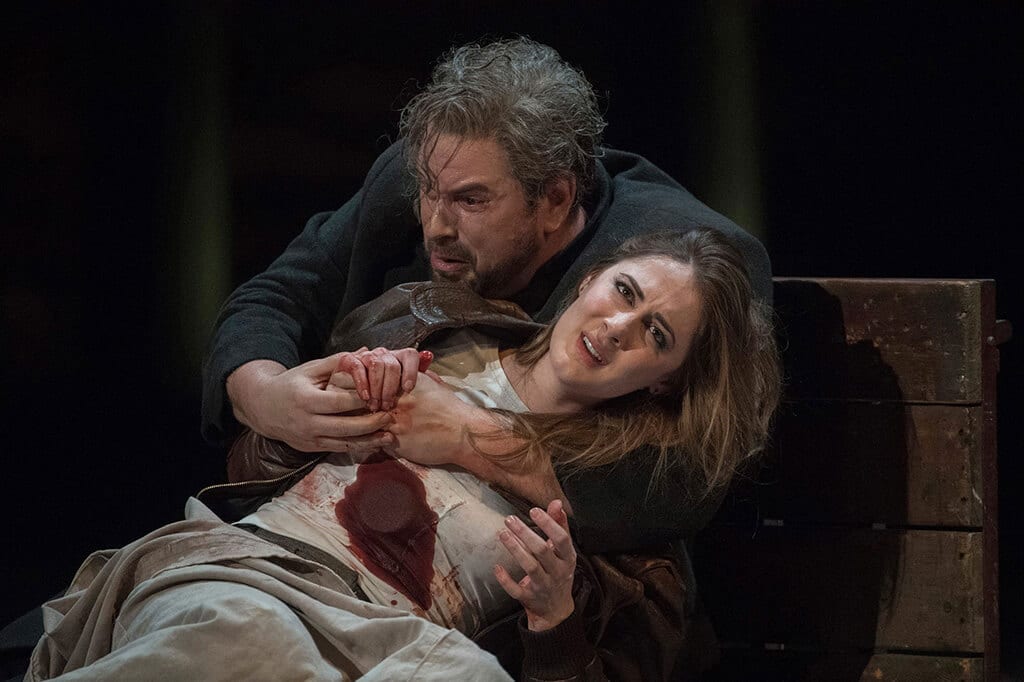The new production of “Rigoletto” at the ENO is the thirteenth revival of the legendary performance, first staged by Jonathan Miller way back in 1982. However, even after 35 years, the directing and staging seem fresh and very much relevant to our time. What gives this production such a long and successful life?
Jonathan Miller moves the action of the opera from the court of the Duke of Mantua in sixteenth-century Italy to Little Italy in New York in the 1950s, and the Duke becomes the head of the local mafia, surrounded by his henchmen. This was a revolutionary decision in the eighties, and even now the performance excites us with very recognisable characters, as the director has established very subtle and true-to-life relationships between them.
The court of the Duke is transformed into a posh bar where the gangsters enjoy themselves. We witness their quarrels and excitements, and the whole chorus does a great job in performing a united crowd that cherishes their boss in well-orchestrated singing. We can see the trouble the Duke causes to women without the need for words, as he takes the Countess of Ceprano away to another room, to the approval of his gang. Joshua Guerrero’s singing is a bit uneven at the beginning, but he improves throughout the performance. However, he appears rather awkward on stage and does not seem to act particularly convincingly as a serial womaniser.
Rigoletto, performed by Nicholas Pallesen with passion and subtlety, is very moving in his devotion to Sydney Mancasola’s Gilda. All three main characters are performed by American singers, who manage to create a captivating performance with the help of revival director Elaine Tyler-Hill. The strongest point of this production is that we can effortlessly identify with the emotions of the characters, despite a very intense plot, so that at times it seems that we are watching a movie with the actors singing.
“Rigoletto” was written by Verdi shortly before “Il Trovatore”, which is at the moment being performed at the Royal Opera House. In this production the director has moved the action closer to our time and has even placed a tank on stage, but the characters there do not seem to be of our time and therefore remain quite distant, unlike the ones in “Rigoletto” at ENO.
The audience received the performance at ENO very warmly, rewarding the singers with applause throughout and with a standing ovation when Jonathan Miller appeared on stage at the end. This is one of the timeless productions that manages to capture eternal feelings while asking existential questions: What is revenge? Can it be justified? Jonathan Miller helps us to better realise a truly Biblical answer hidden in Verdi’s opera – by trying to kill someone you are killing yourself and your own children.
A great revival of the iconic production and highly recommended.




